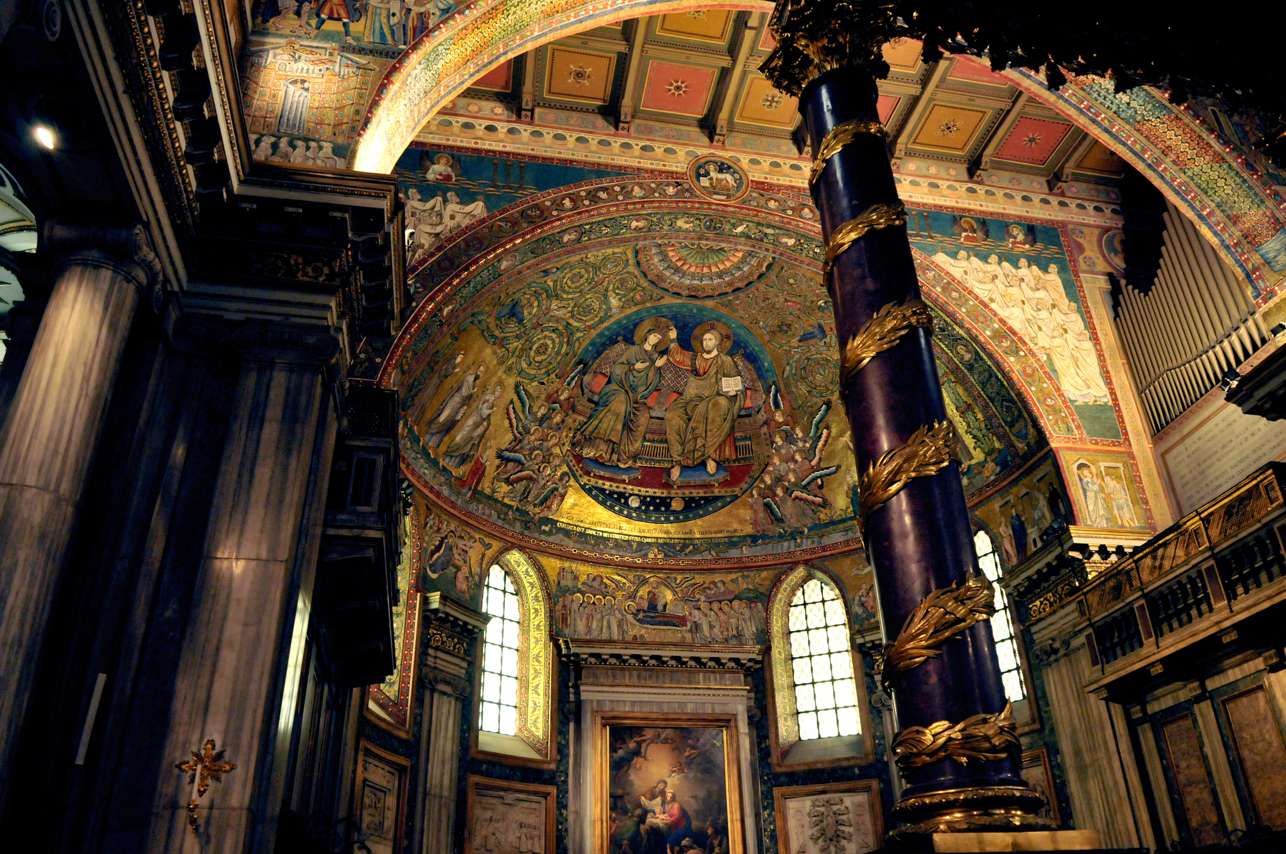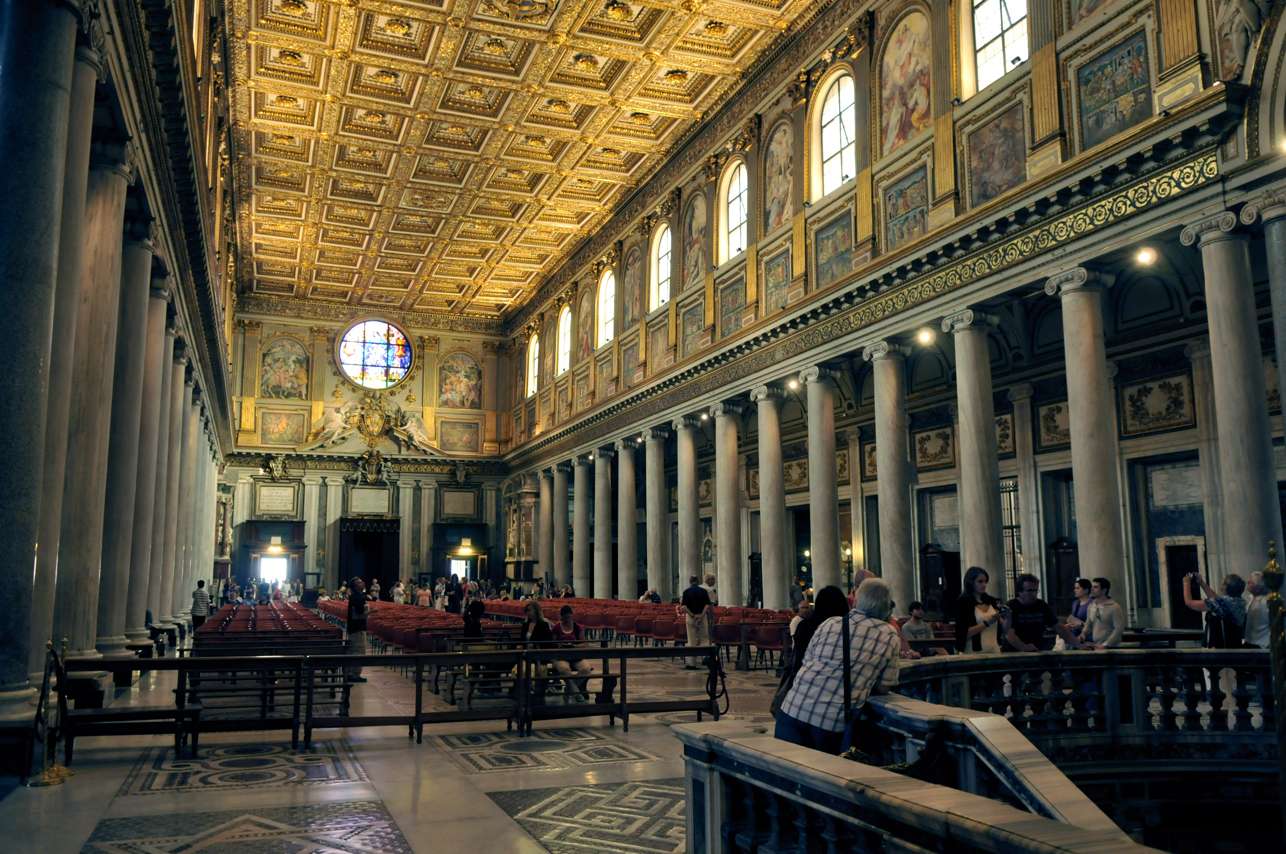Mosaic Art: During The Romanesque Period
Ever since Charlemagne had succeeded to a firm scope in strengthening his empire, he selected Aix-la-Chapelle as a place of residence and called around him artists of all kinds both from the former Western and from the Eastern Roman empires. The artists were engaged in decorating and adorning his fortresses, and it was here that a new style, the Romanesque style, based upon classic architecture, and very strongly influenced by Byzantine mosaic art, which stood then at its utmost splendor!
I recently came back from Italy with a bag of inspiration and splendor in my eyes. Some of which include the antique Romanesque architecture, the Roman triumphal columns, as well as the breathtaking interiors of cathedrals and basilicas. Therefore I thought of today’s article as a brief yet precise pedagogy of the Romanesque Period, catching a glimpse of some of the most interesting mosaics of that time.

A Brief History of Romanesque Art
This art style known as Romanesque flourished in Western Europe and developed in close association with Romanesque architecture. It was basically believed to be an ornament for buildings formed during this period. Originally linked with the reformation of religious sects that began to evolve in the 900s, and as a result, most Romanesque art is religious in subject matter. The greatest creations in art during the Romanesque period occurred in mosaic murals, paintings and sculpture adorning monuments. Manuscript illumination, stained glass, and metalwork have also revealed the main aspects of the Romanesque style.


Development of Romanesque Period
The Romanesque Period developed at a time of increasing religious zeal and an expansion in the tradition of pilgrimages to the temples of saints. So in order to accommodate these pilgrims, churches became larger, aesthetically pleasing, and ornamented with stained glass murals and mosaics. The mosaics of Romanesque churches were usually created using brightly-colored stones, depicting scenes from the Bible. Icons and images were very useful to convey religious messages and morals because most of the European population was illiterate at the time.

Mosaic Art as a Romanesque Art Form
When Romanesque interiors were considered as entire and integrated designs, Mosaic art was reallocated from a domestic ornament to adorning cathedrals and outstanding basilicas. Oftentimes imitating the Byzantine paintings and murals, the same sort of imagery would be seen in these mosaics on the church walls.
In a Roman Art handbook, Martin Henig explains that “There can never be a history of Roman mosaics in the sense of a demonstrably linear evolution of a single or universal style. The Empire was really huge while communications were too slow and alternating for such a fruition to be possible”.

Last but not least, some of the most beautiful mosaics and intricately designed artworks which are still present today in cathedrals and churches came from the Romanesque art period. This specific style of architecture that combined several art forms and ornaments like sculpture, stained glass, mosaics, and murals that appeared across Italy, France, Germany, and Spain during the 11th century”. The Romanesque period was richer and more grandiose than anything witnessed during the era of the Early Christian Art. Coming towards the end of the Middle Ages, the Romanesque world was witnessed as a large society, united by Christianity. This union could be observed today in several European influenced cathedrals around the world!

What do you like most about this article? Sound off in the comments below!
You may also want to read: A Journey Through Byzantine Mosaic Art or Mosaic Designs: Journey To the Heart of Tuscany
If you want to read more articles about the rich history and spectacular beauty of Rome, Florence and Venice, remember to let me know in the comment box below!

